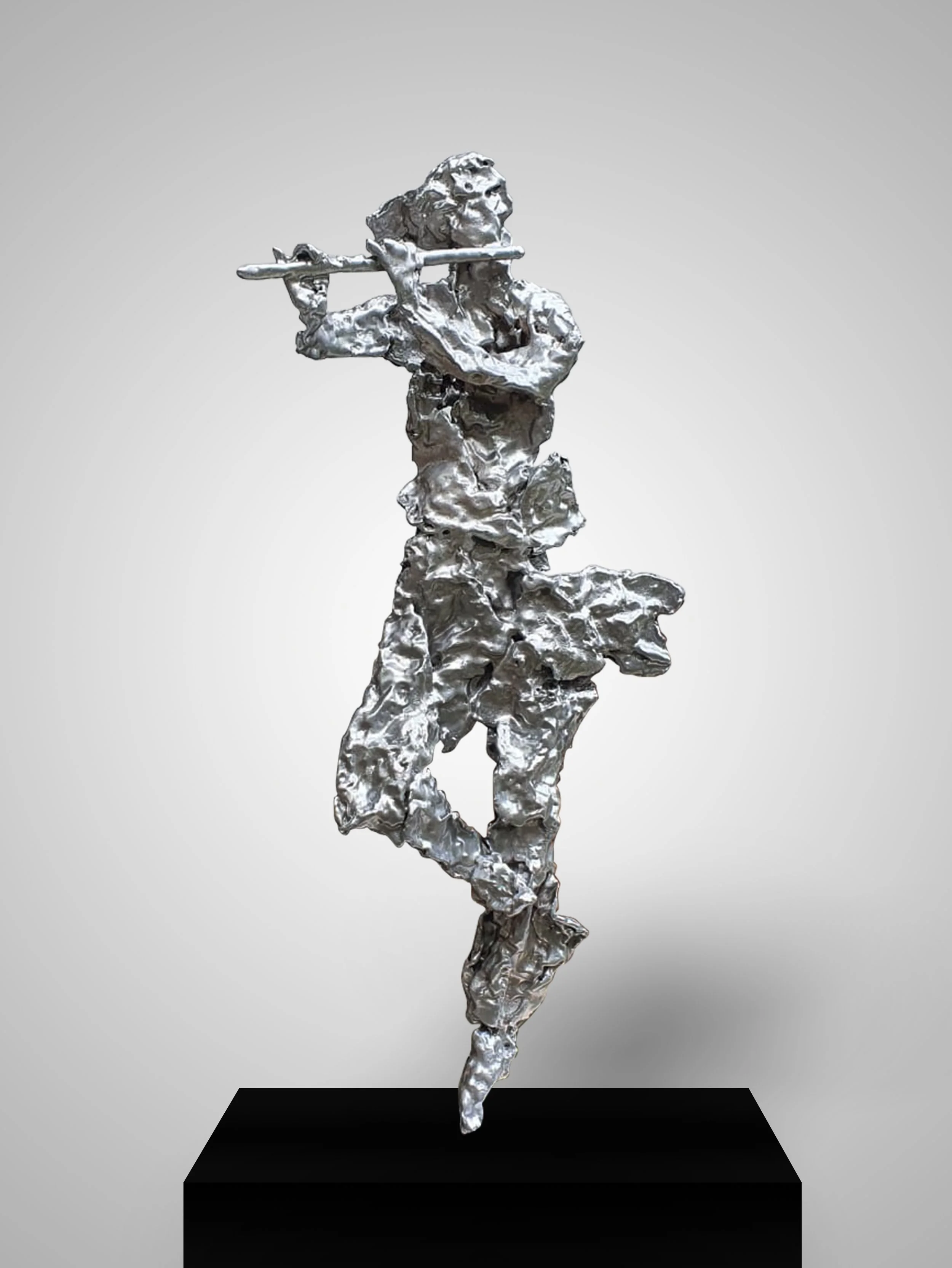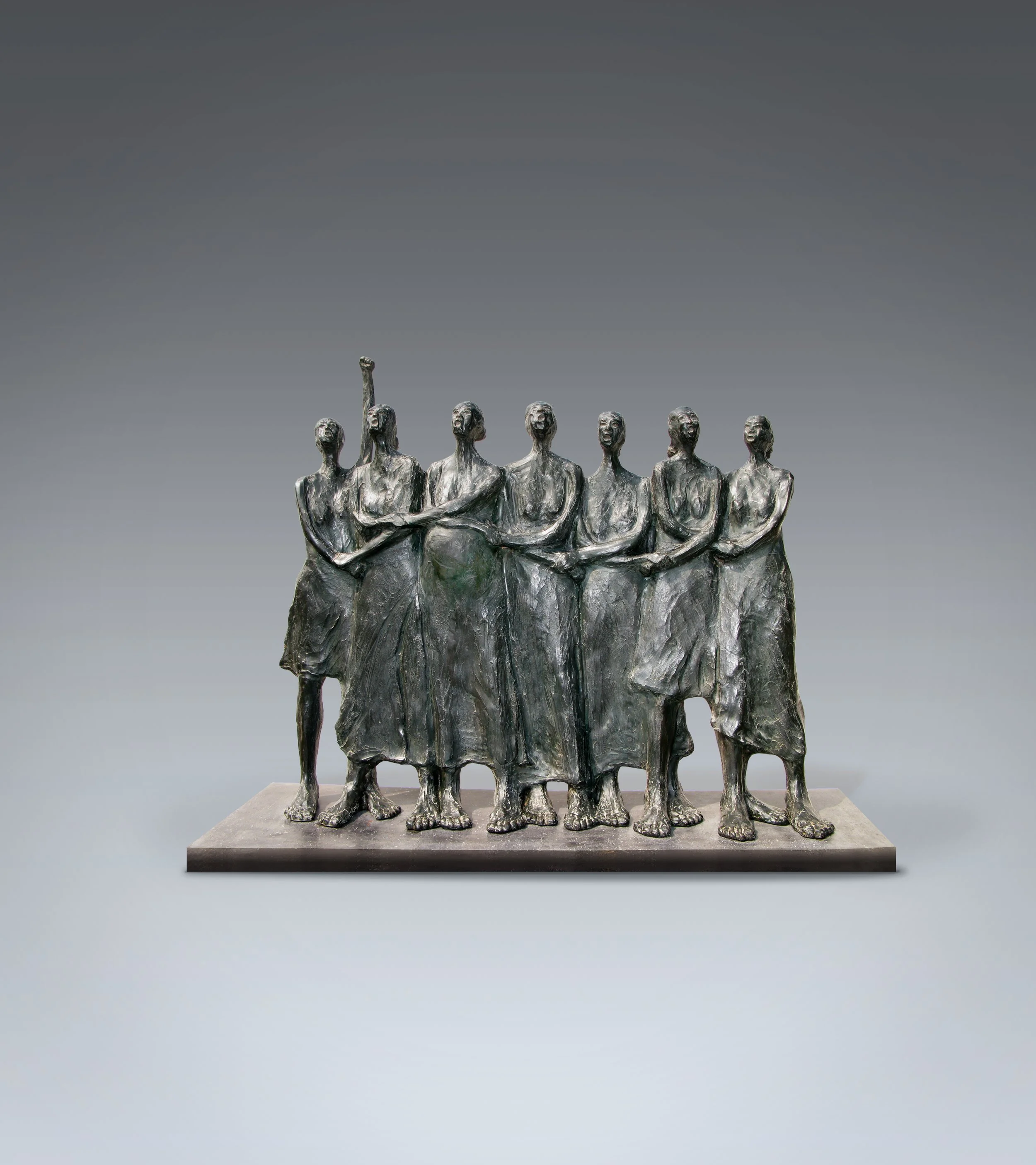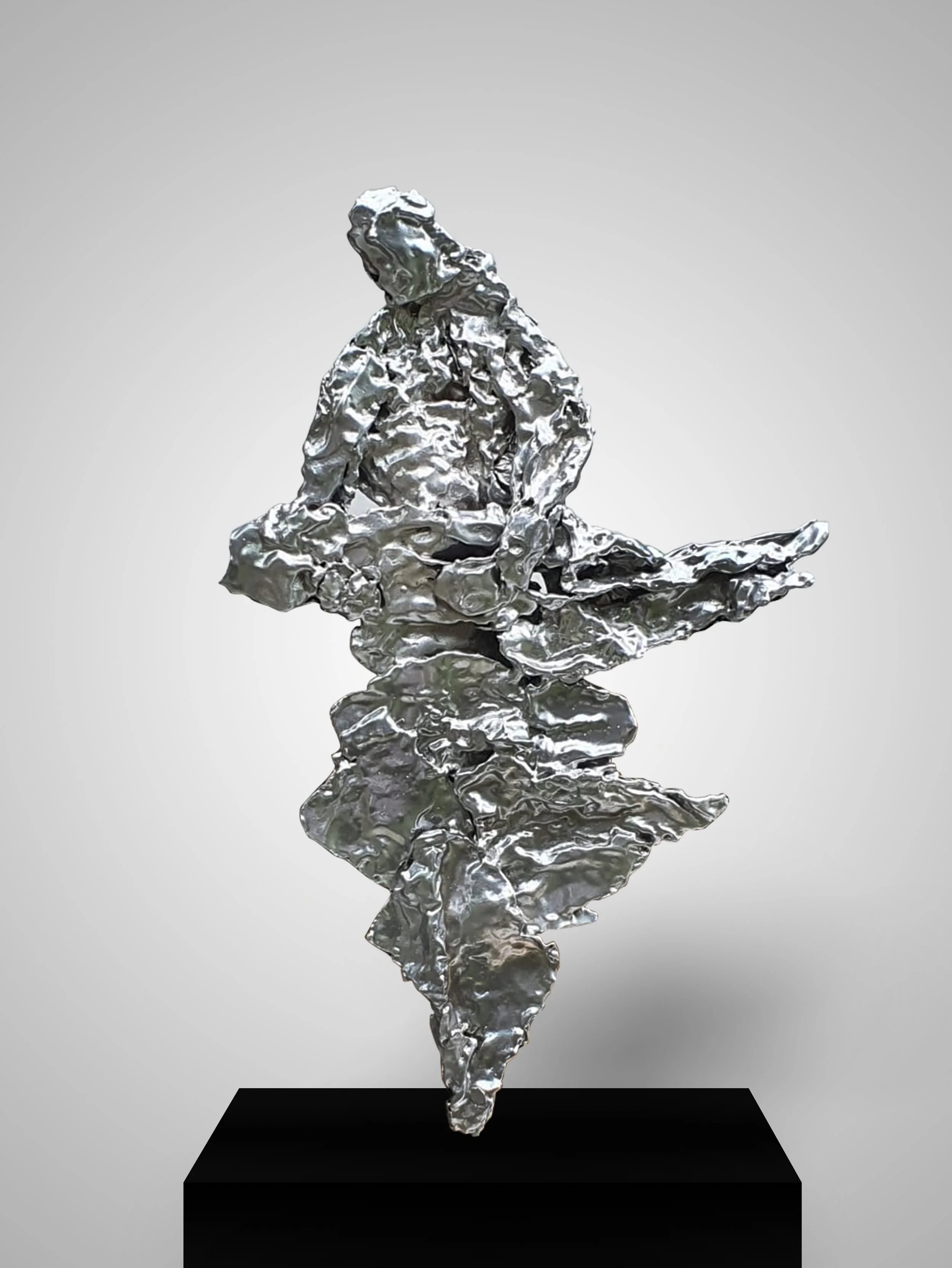
Dolorosa Sinaga
From top to bottom
“Aku dan Ajal” - fiberglass, 83 x 40 x 74 cm, (2021)
“Concise History of the Mass Murdered of 1965 in Indonesia” - resin lapis warna tembaga, 40 x 50 x 26 cm, (2015)
"The Witness" - perunggu, 13 x 28 x 38 cm , (2022)
“Life is a Long Song (homage to Jethro Tull”- aluminium foil lapis resin dan silver coating, 24 x 0,9 x 49 cm, (2018)
"Soidaritas_perunggul" - 110 x 43 x 83 cm, (2000)
"Theme for Us Today The Crisis Perfume River" - Hue, Vietnam_batang besi,300 x 100 x 475 cm, (1998)
“Woman Carrying a Corpse” - aluminium foil lapis resin dan silver coating, 22 x 0,3 x 35 cm, (2020)
Dolorosa Sinaga (b. 1952)
Dolorosa Sinaga is a sculptor of prominence in Indonesia who has blown a fresh wind into the Indonesian art scene. Born in North Sumatra as the fourth child of entrepreneur Karel Mompang Sinaga and his wife Nur Pinta Sihombing, she came to be known as a strong-willed defender of the marginalized, who broke through the existing social and masculine sculpture art tradition, establishing a new spectrum for Indonesian sculpture. Much inspired by Kaethe Kollwitz, the German expressionist graphic artist and sculptor whose work expresses compassion for the working poor, Dolorosa revealed “Kaethe Kollwitz inspired me to focus on women as the center of humankind.” The female body became Dolorosa’s medium of expression and a metaphor for human experience. Through a woman's body, she talks about the condition of humanity, and with a woman's body she also transforms adversity into resurrection and a fighting force. Siding with the downtrodden, the suppressed and the marginalized, infused with a spirit of humanity, her art evoked the term Resistance Art.
She received the Citra Adikarya Budaya (1997) Award, and Anugerah Seni Budaya (2009) from the Government of the Republic of Indonesia. Initially, art was not what she wanted to do, but she felt attracted to the air of freedom with which some kids would draw their images. Even so, she was not yet thinking of going into sculpture.
As a sculptor one must have a strong fighting spirit and be able to work hard she said. However, towards the end of her final exam at Jakarta Arts Education Institute (LPKJ, 1971-1980) she had a change of mind, and felt that she would like to work with volume, turning mass into an expression. Since then, Dolorosa studied sculpture at the LPKJ, now known as IKJ or the Institute of Art in Jakarta, where she became the first graduate, then lecturer–until now. She became Deputy Dean (1988-1992), Dean of the Faculty of IKJ Fine Arts (1992-2001), and also Chair of the Senate of the Faculty of Fine Arts (2008-2016).
She took her postgraduate studies in sculpture at St. Martin School of Art, London (1980-1982), and attended various short courses abroad, learning about the process of casting bronze statues, using a ceramic shell medium to wrap and make sculpture molds where molten bronze is poured into the mold. She also studied the process and techniques of chemical staining on bronze at Piero Art Foundry Berkeley, life-like printing at the San Francisco Art Institute; the foundry building process at Maryland University department of engineering, a process of molding sculptures with glass sand as the medium at Sonoma State University; and techniques and processes for making sculpture models at scale to enlarge dimensions of the sculptures as required at the Ringling School of Art in Sarasota, Florida, USA. Dolorosa also attended a sculpture symposium at a discontinued marble quarry in Kornarija, Ljubljana, Yugoslavia.
Bronze was initially her preferred material. The reason being because bronze has a quality that can give a stunning impression. In addition, she conveys that bronze encompasses combined male and female features, resulting in great strength and endurance. She delights in the tension inherent in bronze. Sculpting is an act of tension, she once explained the emotional and physical tension in her sculpture. Besides bronze, Dolorosa also uses aluminum with a resin coating, which makes her work lighter and more elegant, especially in the dancing women series that she created later in the process of her professional career.
Her early works were marked by the notions of tragedy and sadness as shown in the works of Olympia, where a woman is contained within an enclosure. Tragic Tendency, in which a lifeless woman is placed against the harsh bars of a cage, and Wailing where three women are shown in suppressed suffering (1996).
Her figures subsequently evolved into uncompromising defiance. In Resistante for instance she portrays a figure with one hand at her back clenched in a fist while the other hand squeezes her breast, as pain and anger merge in the suffering expression of the woman’s face. The work reveals the process of transformation of pain into a power capable of liberating women from the shackles of desperation. While the tendency was already signaled in those early works, it became a prominent signature after the atrocities in 1998, when she created her most known sculpture titled Solidaritas (2000).
Featuring mostly frail women, but denoting strong expressive facial traits, holding hands to build a strong wall against prevailing power and their feet firmly planted on the ground, their expressive open mouths seemingly shouting out their intent to stand their ground and fight for their existence. It became a symbol of the women’s movement at the time and was placed in the office of the National Commission on Violence Against Women (Komnas Perempuan) in Jakarta.
Other works are infused with a strong energy and the will to fight, as seen in the gestural movements of the hands in Lawan Kekerasan (1999), Solidaritas (2001), Avante (2001), We Will Fight (2003), Dance of Solitude (2002), Hanya Satu Kata Lawan! or the minimalist sculpture I the Witness.
The fighting spirit was paired with feelings of deep sorrow as revealed among others in her sculpture in The Grief (2002), dramatically featuring moving bodies in deep mourning marked by the undulating pleats of their skirts.
Several monuments and installations were also made abroad either as commissioned works or made on invitation, such as Gate of Harmony (1987) in Kuala Lumpur - Malaysia, Theme for us today: The Crisis (1998) and At the Border (2004) in Hue - Vietnam, Faith and Illusion (1996), and Stand in the Queue (2006) at the Pievasciata Sculpture Park of Chianti - Italy, the Monument of Sukarno in Algeria - North Africa, while there is also an earlier monument in Jakarta, Monumen Semangat Angkatan 66.
It may not come as a surprise that amid the 600 overwhelming sculptures featuring female figures, there are no more than just 5 male figures, all having the same characteristics such as Widji Thukul, Abdurrahman Wahid, Dalai Lama, Multatuli, and Sukarno, who she considers as staunch warriors of humanity.
As stated in the book titled "Dolorosa Sinaga: Tubuh, Bentuk dan Substansi" edited by Alexander Supartono and Sony Karsono in 2019, Dolorosa said that her career was actually a long journey to realize democratic values. For her, the involvement of artists in fighting for democratic values is a must.
CB, edits Feb 25 2022








